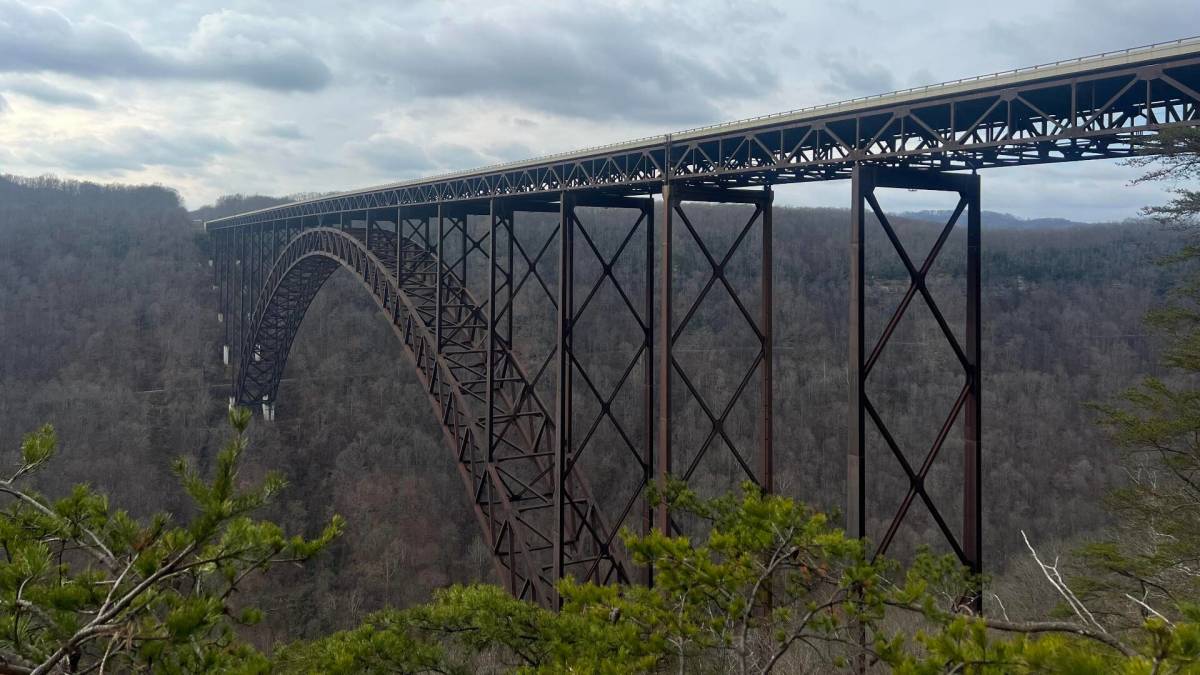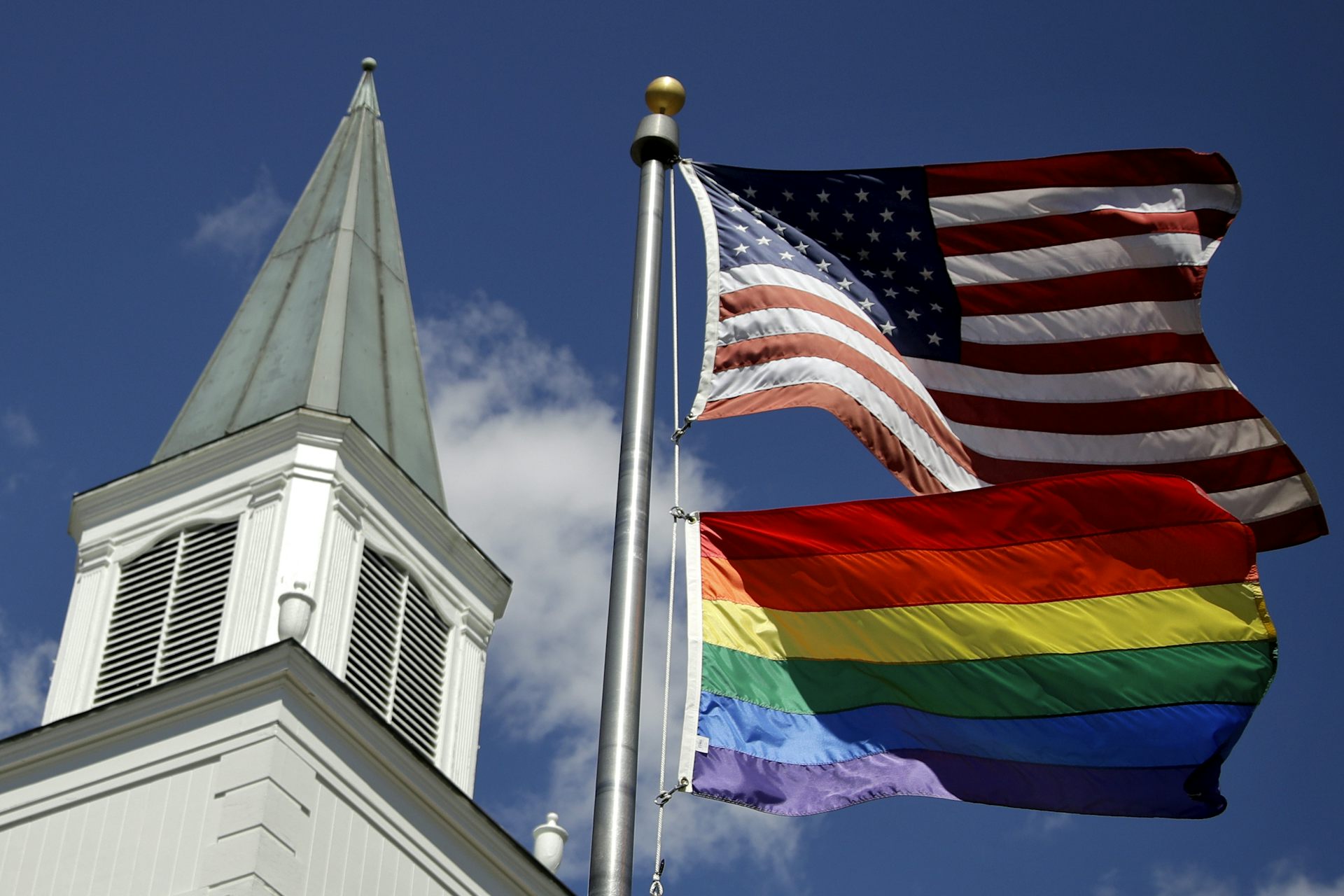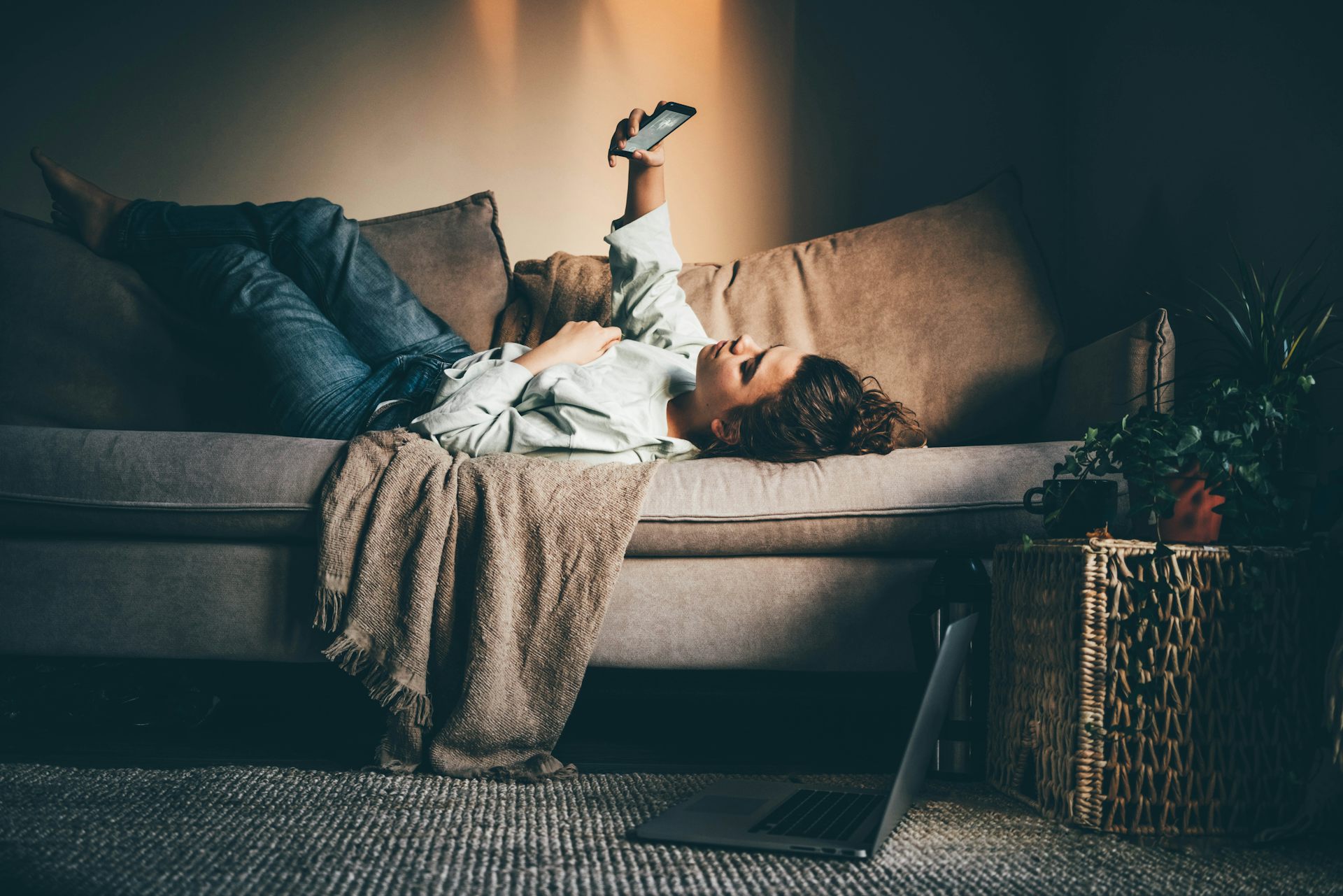Spread & Containment
These National Parks are the most expensive to visit
A new report looks at the cost of entry fees at the country’s national parks.

While the 63 national parks spread across the U.S. are an inextricable part of American culture, visiting all of them is by no means a cheap endeavor.
Many are not easy to access without a car and, along with the usual travel and accommodation costs of going to so many states and territories, the parks themselves also charge visitors fees at different points in their visit. Sometimes this is exclusively for “extras” such a spot on a camping site but, increasingly, parks have been either raising or introducing entry and parking fees amid overcrowding.
Related: I visited two of the country's most underrated National Parks — here's what it was like
The most expensive national park in the U.S. is, as travel journalist Stephen Hanson recently identified in a fare comparison, the Gates Of The Arctic National Park & Preserve in Northern Alaska.
Veronika Bondarenko
This is the most remote (and often most expensive) national park to visit
Often dubbed the “most remote national park in the U.S.,” the Gates of the Arctic has no entry fee but is incredibly costly to get to due to its location in the far north of the Arctic. Without direct road access, the only way to get there is to fly from Anchorage to the nearest small settlement such as Kotzebue or Anaktuvuk Pass by charter plane. The Arctic terrain also means visitors often need to hire guides, pay inflated prices for the limited accommodation and bring special gear.
More Travel:
- A new travel term is taking over the internet (and reaching airlines and hotels)
- The 10 best airline stocks to buy now
- Airlines see a new kind of traveler at the front of the plane
“While many beautiful national parks in the US are well worth a trip despite their remote setting, Gates of the Arctic National Park & Preserve requires a particularly dedicated resolve from any traveler who wants to visit,” Hanson writes. “Though prices can vary depending on the length of the trip and the destination, passengers can expect to pay anywhere from a few hundred to a few thousand dollars for a ticket.”
Channel Islands National Park off the coast of Southern California is the country’s second-most expensive in the U.S. for a similar reason. The five Channel Islands sit in the Pacific Ocean and can only be accessed by ferry from Ventura Harbor. Depending on the time of day and year, the three-hour ferry ranges in price from $60 to $120 (the park itself, once you get there, has no entry fee.)
These national parks are also very expensive (here is why)
Parks that are easily accessible by car but have high entry fees due to overcrowding include Yosemite in California’s Sierra Nevada Mountains and Glacier National Park on the border between Montana and Canada’s British Columbia.
Both parks charge each vehicle coming in a $35 entry fee on top of additional additional fees for staying there overnight. In 2021, Yosemite raised the camping fee from $6 to $10 per person to keep up with the cost of running the park amid growing numbers of people who started visiting as part of their local travels during the pandemic.
“Visitors should be prepared to spend more money on gas and set aside an entire day for travel when heading out to the park,” Hanson writes of Glacier National Park. “Upon arriving, visitors to Glacier will have to pay a $35 entry fee.”
SEE THE FULL LIST OF MOST EXPENSIVE NATIONAL PARKS HERE.
stocks pandemic spread canadaSpread & Containment
Tackling social isolation could be more effective than healthy eating for obesity
A recent study showed encouraging people with obesity to interact with others more can keep them alive for longer.

People with obesity are commonly urged to lose weight by eating more healthily, cutting down on calorie intake and exercising more – but that advice overlooks a crucial problem.
It overstates individual agency – putting the person at fault because of poor lifestyle choices – and doesn’t take into account all the factors contributing to the obesity crisis. For instance, research has found that there are significant social determinants of obesity, such as poverty, stigma and loneliness.
A recent study of people in the UK has suggested that one way to keep obese people alive for longer is to encourage them to interact more with other people.
Why exactly might this be?
The study came to its conclusion using something called hazard ratios, a measure of how often a particular event happens in one group compared to how often it happens in another group, over time. It found that people who’re less socially isolated have a reduced hazard ratio of death from any cause (known as all-cause mortality). This means that people who’re more socially connected are less likely to die prematurely from any cause.
This is even more significant in people with obesity. Isolation has a bigger affect on the risk of death in people with obesity than those at a healthy weight. Those with obesity showed a four times greater reduction in mortality risk than people without obesity when their levels of social isolation fell.
We also know obesity leads to a higher risk of social isolation, which in turn has mental and physical health implications. So it’s not surprising that reducing social isolation amongst among people who are obese would reduce the risk of mortality.
However, the degree of change is perhaps unexpected. It means that tackling social isolation could make a bigger difference to those with obesity than other contributing factors. In fact, the study found a reduction in social isolation more associated with decreased risk of death than any other factor, including a healthy diet, physical activity, alcohol consumption, depression and anxiety.
Relationship between social isolation and obesity
Obesity is a medical condition where people have excessive body fat, as measured by their body mass index. Growing rates of obesity means some studies predict around 20% of the global adult population will be obese by 2030.
And the problem is worse in high income countries. Around 25% of adults in the UK are already considered obese, and the rate in the US could become as high as 45% by 2035.
This rise is intertwined with growing levels of social isolation and loneliness. Both increased during the COVID pandemic and and both are linked with a greater risk of mortality, just like obesity.
There is a two-way relationship between obesity and social isolation. In an attempt to escape feelings of isolation, people may consume more food and drink than usual, or eat more unhealthy foods such as chocolate, cake, biscuits – so called comfort foods.
Being isolated and feeling lonely can also lead to a reduction in exercise. Both excessive eating of unhealthy food and a lack of exercise will inevitably lead to weight gain.
On the other hand, obesity can lead to social isolation and loneliness, as people experience stigmatisation, rejection, discrimination, bullying, self-blame and reduced self-esteem. It can also engender a loss of trust in others, and a perception that social situations pose a threat, so are best avoided.
We also know obesity is associated with poorer mental health, especially in women.
Unsurprisingly then, obese people are more likely to isolate themselves, avoid spending time in public places and interacting with others. This can include an avoidance of health care settings, preventing those struggling with weight gain from getting the necessary support.
The most recent study demonstrates the significant damage that social isolation can have on those with obesity. The findings should not be interpreted as a signal that the sole answer to health risks of obesity is making social connections. However, the study should prompt a rethink of attitudes and approaches to obesity that focus exclusively on the individual’s diet and exercise. Research has shown that the traditional “eat less, move more” advice is simplistic and outdated.
Healthy eating and exercise should not be prioritised in obesity treatment at the expense of all other factors. To reduce the mortality risk of obesity, social isolation must be taken into account alongside healthy eating and physical activities. Tackling obesity, then, should include group activities and opportunities for regular social interaction in safe welcoming environments.
Andrea Wigfield does not work for, consult, own shares in or receive funding from any company or organisation that would benefit from this article, and has disclosed no relevant affiliations beyond their academic appointment.
depression pandemic treatment mortality ukSpread & Containment
A dramatic schism over social issues? The United Methodist Church has been here before – but this time, America’s religious landscape is far different
The United Methodist Church will hold its General Conference, delayed several years by the pandemic, in April 2024. The meeting comes amid a dramatic divide…

The United Methodist Church’s General Conference will meet in Charlotte, North Carolina from April 23 to May 4, 2024. Originally scheduled for 2020 and delayed three times due to the COVID-19 pandemic, this meeting of the church’s legislative body comes at a critical time for the United States’ second-largest Protestant denomination.
In 2022, conservative Methodists announced a break with the UMC, forming the Global Methodist Church. These leaders believed that the UMC had become too liberal, drifting away from orthodoxy. The issue at the heart of the split, however, revolves around the UMC’s long-standing battle over LGBTQ+ rights.
This denominational split draws comparisons to one in 1844, when Methodists divided over slavery. As a scholar of American religious history and Methodist studies, I see parallels but also great differences between the current schism and the one in 1844.
Both schisms center on predominant social issues of their eras. The current schism, however, comes at a time when United Methodists, like other American churches, must navigate a changing religious landscape – one where church membership is declining, especially among younger Americans.
Methodist roots
The UMC traces its origins to the 18th-century Anglican clergyman John Wesley, who sought to reinvigorate Anglicans’ sense of personal faith.
Emphasizing piety and social engagement, Wesley’s followers spread Methodism throughout the British Isles and North America. As the movement grew, his followers separated from the Anglican Church to form several Methodist denominations.

The first Methodist church in the U.S., the Methodist Episcopal Church, was founded in 1784. This church and smaller Methodist denominations grew rapidly. By 1850, approximately 1 in 3 Americans affiliated with a church was a Methodist.
Today, there are 80 Methodist and Wesleyan denominations around the world, with the UMC being the largest.
The 1844 rupture
Like other Protestant churches before the Civil War, Methodists were divided over slavery.
Wesley viewed slavery as a great social evil that deprived enslaved people of God-given human rights. However, U.S. Methodists – including one of the founders of the Methodist Episcopal Church, Francis Asbury – worried that enforcing the church’s prohibitions against slavery would alienate members in the South. For much of the early 19th century, Northern and Southern Methodists followed Asbury’s lead, seeking to prevent a formal schism.
At the same time, Methodism fractured. African Americans in the Methodist Episcopal Church were barred from being ordained as ministers, and church members often worshipped in segregated congregations. This led to the formation of many independent African American Methodist churches – the largest being the African Methodist Episcopal Church, founded by Richard Allen in 1816.
At the 1844 General Conference, the slavery issue boiled over into a major schism. Delegates voted to remove from office a bishop, James Osgood Andrew, because he owned slaves. Andrew’s removal angered Southern delegates who argued that slavery was sanctioned in the Bible. In 1845, Southern Methodist leaders withdrew from the denomination, forming the Methodist Episcopal Church South.

In 1939, these Northern and Southern churches reunited. Together with another Protestant denomination with historical ties to Methodism, the Evangelical United Brethren, they then combined to form the UMC in 1968.
Debating homosexuality
In 1972, the General Conference adopted a formal statement asserting that homosexuality was “incompatible with Christian teaching.” Subsequent conferences tightened these restrictions, notably in 1984, when the church barred what it called “self-avowed practicing homosexuals” from being ordained.
Since the 1970s, groups on both sides of this issue have mobilized. An organization called the Reconciling Ministries Network has worked to bring together UMC congregations who support the full inclusion of LGBTQ+ people. Conservative groups, meanwhile, such as a caucus called the Good News Movement, have campaigned to enforce the existing LGBTQ+ prohibitions.
In 1996, the General Conference added legislation prohibiting clergy from conducting same-sex weddings – though the number who did so increased significantly.
In recent decades, members of many U.S. churches, including United Methodists, have shown greater acceptance toward LGBTQ+ people. The 2016 election of Karen Oliveto as the first openly gay bishop of any gender in the UMC marked these shifting attitudes.

Conservatives continue to oppose reforms, including a growing number of United Methodists from outside the U.S – an increasing portion of the church. For example, many African United Methodists come from nations with strict laws banning homosexuality. Of the 862 delegates attending the upcoming General Conference, 380 will be from outside the U.S. Nearly 300 of these delegates will come from Africa.
At an impasse
Conflicts between conservatives and progressives came to a head in 2019, when bishops called a special conference in hopes of preventing a schism.
Their council endorsed what was called the One Church Plan, which would have allowed United Methodists in different countries more autonomy. Specifically, they could determine how to address questions on sexuality.
However, delegates voted overwhelmingly for what was called The Traditional Plan. This kept the church’s restrictions against LGBTQ+ people in place, while calling for more punitive measures against pastors who conducted same-sex weddings.
The 2019 conference then passed a resolution giving local congregations the option to leave the UMC over matters of sexuality. Congregations were given until the end of 2023 to disaffiliate, although the ramifications were to be finalized at the 2020 General Conference.

This session was repeatedly postponed, however, due to COVID-19. Doubting that U.S.-based leaders would uphold the prohibitions of the Traditional Plan, a group of conservatives formed the Global Methodist Church in March 2022, triggering an exodus of several local churches. As of early 2024, more than 7,600 churches have disaffiliated, representing roughly a fourth of United Methodist congregations.
Uncertain future
Ahead of the 2024 General Conference, conservatives have indicated their intention to lobby to extend the deadline for disaffiliation. Some progressive United Methodists, frustrated by the UMC’s persistent refusal to expand LGBTQ+ rights, have considered forming a third Methodist denomination.
Regardless of what happens in Charlotte, Methodist churches will face challenging futures.

Unlike 1844, when many churches were growing rapidly, the current schism comes as American Protestantism is shrinking. This includes not only mainline Protestant denominations, but more conservative churches as well. In 1968, United Methodist membership in the U.S. was 10.3 million; at the end of 2018, it was 6.7 million.
Another serious challenge is the rising percentage of Americans with no religious affiliation, commonly called religious nones – many of whom are disillusioned by anti-LGBTQ+ policies.
Regardless of the General Conference’s outcome, Methodists face a religious landscape unknown to their 19th century predecessors.
Christopher H. Evans does not work for, consult, own shares in or receive funding from any company or organization that would benefit from this article, and has disclosed no relevant affiliations beyond their academic appointment.
spread pandemic covid-19 africaInternational
How being furloughed affected people’s sense of time and relationship with work
For many, furlough was a time of disorientation and reflection.

Between March 2020 and September 2021, millions of workers furloughed under the UK government’s Coronavirus Job Retention Scheme lived what for many of us is a dream: being paid not to work.
Through interviews, I’ve researchedthe impact of this time on 35 people who were furloughed under the scheme. I found that for some, furlough created opportunities for reflection and growth, but for most of my interviewees it was a time of uncertainty and disorientation.
Social distancing requirements during the pandemic meant that non-essential businesses were paused or partially closed by the UK government. Under the government scheme, employers could apply for financial grants to furlough workers and pay them 80% of their wage to stay at home.
The higher a worker’s educational qualifications, the less likely they were to be furloughed. Workers from the hospitality and entertainment sectors were most likely to be furloughed, with young workers and older workers particularly affected. More women were furloughed at the start of the scheme than men, though at the end of the scheme more men were affected. And younger workers, as well as minority ethnic workers, were disproportionately likely to be affected by post-furlough job loss.
The gift of time
A few of my interviewees found furlough to be a relaxing break from the stressors of work, or a time to try new hobbies. One woman, an agency administrator, used the time to fulfil a long-held ambition to restore vintage airplanes. An airplane dispatcher researched climate change and became an activist. Another, a café manager, used furlough to learn creative writing and dance through online classes.
But for the majority of those I spoke to, furlough was a disorientating time period. Their experiences show how many people’s everyday rhythms and sense of self are closely tied to their work. Several of the workers I interviewed felt the absence of work acutely.
Abigail*, a fine dining chef, said that she found her usual catering work “creative” and “really satisfying”, especially when people said they enjoyed her food. In furlough she found herself without purpose and spent her days tiptoeing around her partner who was working from home, mindful not to disturb him and his productivity. She couldn’t fill her own time as she felt guilty about being paid to do nothing.

Lydia, a retail worker, found herself unable to maintain her normal circadian rhythms and became “nocturnal by accident”. At one point, she stayed up for 22 hours in order to exhaust herself and reboot her sleep patterns. Lydia’s circadian rhythms only went back to normal when she and her partner, also furloughed, returned to work.
Joanna, a charity worker, realised that she would feel destabilised and “stagnate” by not working during furlough. Joanna set herself up with volunteer work in the charity sector, made a home office and worked from nine to five, with tea breaks and lunch breaks, “to have that element of still working” and to make her days feel like normal working days.
Others had to find alternative income streams when the 80% furlough salary did not meet their living costs. Lee, an events marketeer, learned how to trade currencies through online courses, something completely new to him. Anxious to make ends meet for himself and his family of four, Lee treated the newfound activity of trading as a full-time job.
Disorientation of furlough
How Abigail, Joanna, Lydia and Lee reacted to the absence of their usual work lives exposes how ingrained the rhythms of work can be. When those rhythms were removed by furlough, their lives became disorientating and uncertain in different ways.
My study also revealed that this disorientation continued when people went back to work. Carol, a casino worker, discussed feeling anxious that she had fallen too far out of the rhythms of work while furloughed. Her fears were justified, as after 40 years doing her job, she found timing tasks difficult on her return to work.
Read more: How COVID lockdowns distorted our sense of time – new research
Others furloughed, were worried that they would not be able to keep up with the social aspects of their workplace. Jenny, a stage manager fretted that her banter wasn’t “at the top of my game” and she would be embarrassed by her colleagues by being too slow at matching retorts.
Returning to work also involved catching up with backlogs of tasks that had built up during furlough. Alexandra, an optometrist, discussed how her newly heavy workload made her job feel more stressful than before furlough.
Pausing from work
This pandemic-induced pause revealed how integral work is in some people’s lives. This revelation led some workers in the study to reevaluate their relationship with work.
Caroline, a charity worker, began to think that she had given too much time and effort to her employer. On her return to work, like many other people, she started “quiet quitting” – or putting less effort in. For Carlos, a food scientist, furlough made him realise that his employer did not fulfil his expectations, so he resigned and found another job.
Like many in the study, Alison, who used furlough to learn to dance and write creatively, discussed how the time helped her revise her attitude to work, saying: “Work used to be my life… I realised life was not work”.
*All study participants have been anonymised.
Victoria J E Jones received funding from the UKRI through the ESRC to conduct the PhD study 'Waiting Through Furlough: a Geography of Disorientation' which is the research referred to in this article.
grants pandemic coronavirus currencies social distancing uk-

 International2 weeks ago
International2 weeks agoParexel CEO to retire; CAR-T maker AffyImmune promotes business leader to chief executive
-

 Spread & Containment4 weeks ago
Spread & Containment4 weeks agoIFM’s Hat Trick and Reflections On Option-To-Buy M&A
-

 International1 month ago
International1 month agoEyePoint poaches medical chief from Apellis; Sandoz CFO, longtime BioNTech exec to retire
-

 International1 month ago
International1 month agoWalmart launches clever answer to Target’s new membership program
-

 Uncategorized6 days ago
Uncategorized6 days agoVaccinated People Show Long COVID-Like Symptoms With Detectable Spike Proteins: Preprint Study
-

 Uncategorized3 days ago
Uncategorized3 days agoCan language models read the genome? This one decoded mRNA to make better vaccines.
-

 Uncategorized12 hours ago
Uncategorized12 hours agoWhat’s So Great About The Great Reset, Great Taking, Great Replacement, Great Deflation, & Next Great Depression?
-

 Government2 days ago
Government2 days agoClimate-Con & The Media-Censorship Complex – Part 1



















